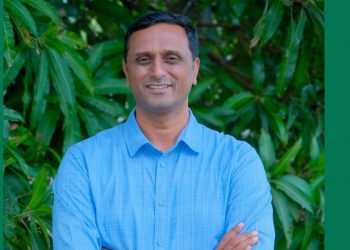India’s strides in space technology have long been a source of national pride, symbolizing
our collective ambition to innovate, explore, and lead. From the success of the Chandrayaan
and Mangalyaan missions to the recent breakthroughs in private-sector space ventures,
India has steadily emerged as a formidable player in the global space community. Yet, what
is equally inspiring is how this spirit of scientific exploration is now resonating within Indian
universities, where young minds are not just learning about satellites, but are designing,
building, and launching them into space.
At KL Deemed to be University, this transformation, from campus laboratories to the skies,
has become a defining chapter in our academic journey. The university’s student-driven
space research initiatives have proven that world-class innovation need not always originate
from large, government-funded research centres. It can thrive just as powerfully within
university ecosystems that nurture curiosity, interdisciplinary collaboration, and bold
experimentation.
Our recent milestone, the successful launch of three indigenously developed satellites,
namely KLSAT-2, KLJAC, and CANSAT, stands as a testament to this belief. Each of these
satellites was conceptualized, designed, and assembled entirely by our students and faculty,
in collaboration with experts from Andhra Pradesh State Council of Science & Technology
(APCOST), REDWING, Indian Space Research Organisation (ISRO), IN-SPACe, and the
Aeronautical Society of India. These collaborations not only brought technical expertise to
the table but also instilled in our students the confidence to contribute meaningfully to
India’s national space ecosystem.
Each satellite mission had its unique objectives. KLSAT-2 focused on atmospheric data
collection and telemetry; KLJAC tested new communication modules and onboard control
systems; while CANSAT explored miniaturized payloads and environmental monitoring.
Together, these projects provided students with an immersive, end-to-end understanding of
the satellite development process—from mission design and payload integration to launch
coordination and post-launch data analysis.
This achievement is not merely a technological feat; it represents an educational revolution.
Students who once dreamt of touching the stars are now gaining hands-on experience in
aerospace design, avionics, telemetry, and atmospheric research. Such experiences bring
alive the very essence of “learning by doing.” They empower students to move beyond
textbooks and classrooms, equipping them with the technical expertise, creativity, and
resilience required in the rapidly evolving aerospace sector.
At KL University, space research is viewed as more than a specialized field, it is a platform
for holistic education. Working on these missions required interdisciplinary cooperation
between departments of mechanical engineering, electronics, computer science, physics,
and even business management. This cross-disciplinary engagement reflects the university’s
philosophy that innovation flourishes when diverse minds collaborate towards a common
goal.
This initiative also aligns closely with the National Education Policy (NEP) 2020, which
emphasizes multidisciplinary learning, research-based education, and innovation-driven
growth. By integrating hands-on projects with academic curricula, universities like ours are
transforming into incubation hubs for “New Space India”, bridging the gap between
theoretical knowledge and real-world application. Our students are not only becoming
skilled engineers but also emerging as innovators, entrepreneurs, and global thinkers ready
to lead India’s next chapter in space exploration.
Looking ahead, KL University envisions establishing a Space Research and Innovation Hub, a
dedicated centre for developing affordable, lightweight, and environmentally sustainable
satellites, high-altitude balloon missions, and experimental payloads for microgravity
research. This hub will serve as a collaborative platform for students, faculty, industry
partners, and research organizations to co-develop next-generation technologies in satellite
design, communication systems, and data analytics. Through such initiatives, we aim to
create an enduring pipeline of young scientists and engineers who can contribute directly to
India’s growing space economy.
The university also plans to integrate space research into undergraduate and postgraduate
curricula, enabling students from diverse disciplines to engage in research and innovation at
an early stage. By doing so, we hope to foster a culture of curiosity and discovery, one that
inspires students to question, experiment, and innovate.
From a humble university laboratory to the vast skies above, this journey embodies the true
spirit of self-reliance, aspiration, and academic excellence. It showcases what can be
achieved when education transcends traditional boundaries and embraces experimentation
and innovation as central to learning. As educators, it is both our privilege and our
responsibility to nurture this momentum, to ensure that every young mind that looks up at
the stars does so not just with wonder, but with the confidence to reach them.
KL Deemed to be University’s space research journey is more than a story of satellites; it is a
story of transformation, of how curiosity can evolve into innovation, and how education,
when rooted in purpose and passion, can literally take flight. As India continues to rise as a
global leader in space technology, universities like ours stand ready to play a vital role in
shaping the scientists, engineers, and visionaries who will define the future of our nation’s
space odyssey.

























































